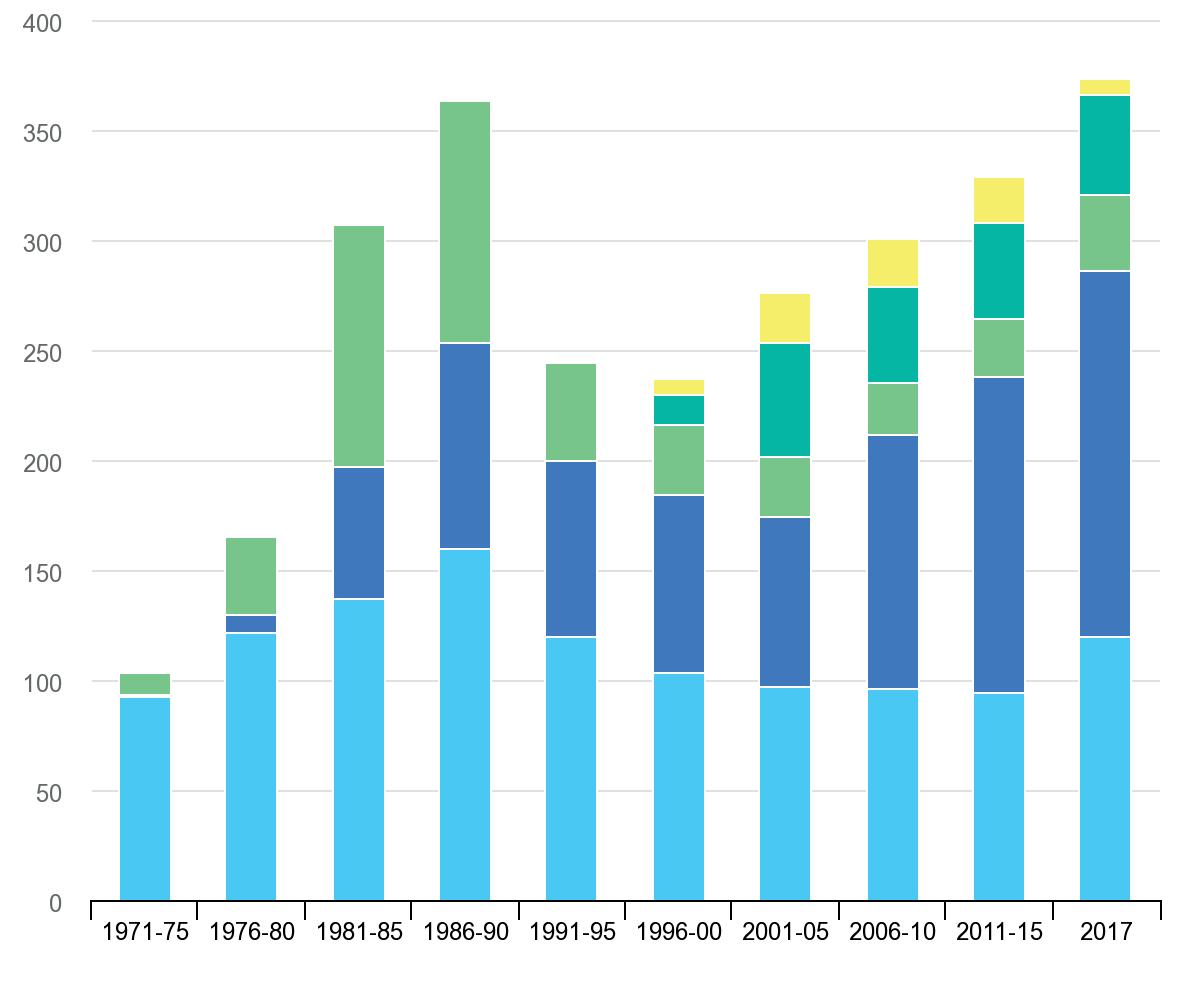
7 minute read
More remote, more control
Having been in the pipeline business for most of my working life, I have seen many changes, particularly within the oil and gas sector; not just with new and advanced technology, new processes, and production methods, but also the extreme changing conditions within the oil, gas and petrochemical sectors, and the energy sectors generally. Major advancements in technology have enabled large oil and gas companies to extract these materials from remote and deep locations and to harness energy from tight reserves which previously were not possible. Robert Colton, Director of Product Management at GPT Industries, USA, offers his thoughts on how operators can maximise safety when dealing with extremely sour gas.
According to the Office of Fossil Energy & Carbon Management, “enhanced oil recovery (EOR) techniques that offer prospects for ultimately producing 30 - 60%, or more, of the reservoir’s original oil in place”.
However, extracting such media from these tight locations also has its disadvantages. Having been locked away under the ground and sea for millions of years, this media has matured into a toxic, aggressive, dangerous, and extremely corrosive sour substance which can contain some very high levels of hydrogen sulphide and carbon dioxide, both silent killers. This poses huge challenges for
all concerned, not only for extracting such media, but also handling and processing it.
There are of course many factors that need to be considered whilst harvesting what I would not-so-fondly term as the ‘sour demon’. The financial costs for businesses to extract and refine sour gas are huge, particularly when it comes to the protection of fixed assets, keeping them free from corrosion and the environment free from emissions. Even more important is the protection of their human assets, keeping them safe from leaks and emissions which in such environments can prove fatal. So, the primary factor to be considered here is of course safety. It is fair to say that piping systems have come on a bit since Roman times, but then again, the Romans only really had water and sewage to worry about. Today, it’s a very different story, with the safety of employees and the public at stake. However, we live in a very competitive world and there is huge emphasis on cost savings and supply chains are key to this process, ensuring the company is buying smart to help the bottom line. However, should price and cost savings come before the protection and safety of people? It would appear that in some cases, lower cost product will sometimes win the race against a value proposition that delivers a safer working environment. According to a recent survey conducted by Sphera, an oil and gas operational risk management company, “cost pressure caused by a downturn in the oil price was identified as a significant contributor to the focus on price over safety. Just over half of respondents (52%) said there was a resource tension between safetyrelated projects and other capital project allocation”. Many major companies around the world will have ‘safety’ embedded within one of their core values. There is no doubt that many companies do take safety very seriously, but there is concern that there are some that simply say all the right things, whilst still keeping their eyes firmly fixed on the bottom line. This might seem controversial; however, citing the Sphera survey again “in 2017, 70% of respondents said they believed there were gaps between how process safety was planned and how plant and assets were actually

Figure 1. Number of EOR projects in operation globally, 1971 - 2017.
Figure 2. Sour gas world map.


Figure 3. The world’s first fully encapsulated isolation gasket.

Figure 4. ‘Eye of Fire’ blaze near a Gulf of Mexico oil platform.
maintained. In 2018, this figure had risen to 86%”. The report notes that the anecdotal evidence gathered from conversations with process safety professionals is an indicator that “despite best intentions, safety culture remains ineffective in practice”. I will come back to this topic later.
Let us return to sour gas and GPT, a company that manufactures critical service flange isolation products that electrically isolate flanges of dissimilar metals to prevent galvanic corrosion and also provide electrical isolation for cathodic production (CP) systems, among other uses. Flange isolation kits are regularly installed in piping systems which convey extremely sour liquids and gases. We have been in working in the field of electrical isolation for many years and it is a very specialist business to be in. Sealing, isolating and preventing galvanic corrosion within flanges by utilising flange isolation kits requires a steadfast design and critical material selection, as we are exposing these products to extreme sour conditions.
Over the last 30 - 40 years, the main material used to create the dielectric barrier used on the gaskets in flange isolation kits has been glass reinforced epoxy (GRE). However, this is now becoming attacked in very sour environments and by certain chemicals used and found in the processing of oil and gas. These can leave the gasket weak and vulnerable to permeation and leakage. To counter this, we have developed the world’s first dielectrically encapsulated gasket which also has inside diameter (ID) seal technology which offers the tightest sealing isolation gasket on the market today and resistance to the most toxic media. Everything about this new and advanced technology addresses many concerns when trying to seal and electrically isolate flanges and piping systems which convey the most aggressive sour materials. This new development also has ‘fire safe’ as standard, something which most flange isolation kits on the market today cannot claim. Having passed Shell TAT requirements, this is certainly a game changer.
Back to the topic of cost versus value proposition. Many specifications for flange isolation kits are old, going back 20 - 30 years and more. They also call out phenolic as a gasket material – this has been excluded from our portfolio and many major end users for years and yet they still pop up. As mentioned earlier, glass reinforced epoxy (GRE) gasket material is now being attacked in many applications today, so this is why we have invested heavily in this new technology to offer resistance against sour gas, tighter seal ability for near zero emissions and with fire safety as standard. This combination of features and benefits provides end users with the assurances that high pressure, sour media, high temperature and fire safe flanged joints maintain integrity in the most testing applications. We don’t just talk about safety, we do safety.
Now back to my slightly controversial comment earlier on regarding companies putting cost before safety. We have had a major end user who shall remain nameless actually say to us “we do not need fire safe flange isolation kits because we have an impeccable safety record”. Well firstly, I am pleased to hear that and I hope this continues. However, please bear in mind that if this end user has a standard ‘non fire safe’ flange isolation kit installed in a flanged joint in a flow line or a tank farm and there is a fire that makes its way to that flanged joint – it will fail within minutes allowing media within the piping system to escape feeding the fire. So, no matter how exemplary a company’s safety record is, there is always room to improve.
We only have to look back a matter of months to the ‘Eye of Fire’ incident in the Gulf of Mexico to illustrate that fires in pipelines are still an everyday threat, or to two separate pipeline blasts in northern British Columbia and Arizona in which corrosion was cited as the root cause.
We have had many major end users who have installed our safest product in their systems because they want a product that stands up to today’s changing conditions, to prevent corrosion, have near zero emissions and have fire safety as standard. They are changing their specifications and embracing this advanced technology in order to protect their fixed and human assets, while at the same time addressing environmental requirements. They are looking at the value proposition and not costs, where safety is put before the bottom line. Bravo!
Bibliography
https://www.energy.gov/fe/science-innovation/oil-gas-research/enhanced-oilrecovery https://www.ioshmagazine.com/2018/09/11/oil-and-gas-operators-miss-one-foursafety-critical-maintenance-tasks https://www.oilfieldtechnology.com/special-reports/20122019/the-state-of-processsafety-and-operational-risk-management-transforming-the-status-quo/ https://sphera.com/research/psm-orm-report-2019-part-2/









